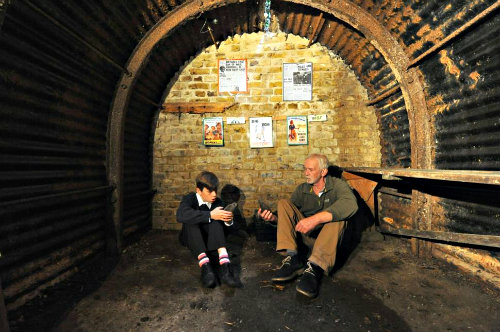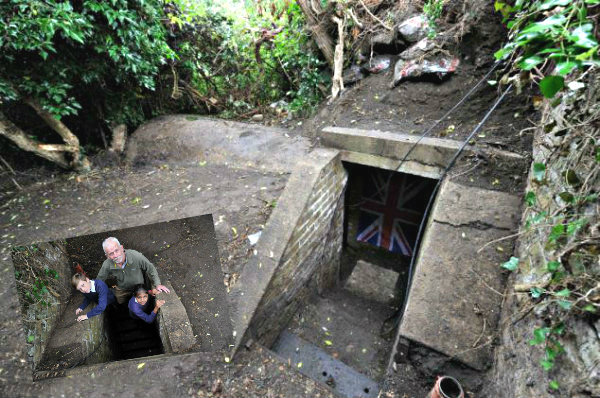A well-preserved 70-year-old WWII air raid shelter was discovered by a pupil at a primary school with its 70-year-old light bulb still in working condition.
The air raid shelter was identified as the historic Anderson shelter which, lay buried for over seven decades before a pupil of the Stoke Community Primary School discovered it.
According to reports, ten-year-old Harvey Cotton was participating in a school activity when he noticed a concrete block at the back of the school’s premises, an area identified as a former orchard.
Cotton reported his find after which the school caretaker, Chris Poulter, was sent to investigate. The result was the amazing find — a well-kept air raid shelter constructed and used during the Second World War.
According to Poulter, he, along with some other personnel, cleared away the plants blocking the edifice and saw the steps leading to the air raid shelter. After doing more clearance work, they were able to get to the entrance which was laden with bricks. Beyond the bricks was a wooden door.
Poulter and the men with him had to knock the bricks down before they could get to the wooden door which served as the entryway into the air raid shelter.
Once inside, Poulter along with Martin Blackwell, a parent of one of the school’s pupils, found a crate of old milk bottles filled with dust. Aside from this, there were other items that clearly lay there untouched for so many years.
However, what surprised Poulter and Blackwell the most was when they ran an extension lead into the air raid shelter to test its light system, the light bulb that was in there lighted up!
the said air raid shelter was said to have been used by the pupils of the schools as well as the local villagers of Lower Stoke during the Blitz in WWII.
In lieu of the discovery, the school has come up with restoration plans for the air raid shelter. In this way, it can be used for experiential lessons about the Second World War.
As what school Head Teacher Anita Meggs stated, the school is very privileged to have an amazing resource right in its very own grounds. She added that, hopefully, older villagers who may have used the air raid shelters during the Second World War might be able to help by relating their war stories to the younger generations within the area.
About the Anderson Air Raid Shelter

Anderson shelters were designed by William Paterson and Oscar Carl )or Karl) Kerrison. IT was made as an answer to a request made by the Home Office.
Subsequently, it was named after the then Lord Privy Seal, Sir John Anderson, who also had the special duty of making precautions in speedy preparation for air raids prior to the WWII outbreak.
Designed to fit in up to six individuals, Anderson air raid shelters have the dimensions of six feet in height, four feet and six inches in width, and six feet and six inches in length. These air raid shelters were, then, buried four feet deep into the soil. In addition to that, each roof of the said air raid shelter was covered with a minimum of fifteen inches of soil.
The Anderson shelters were given to households who had the earnings of less than £5 $8.50) per week. Those who had higher incomes had to pay for the air raid shelters for £7 ($12).
About 1.5 million of these types of air raid shelters were distributed from February of 1939 until the outbreak of WWII. During the conflict, 2.1 million more air raid shelters were built.
